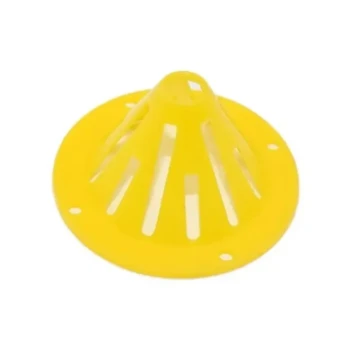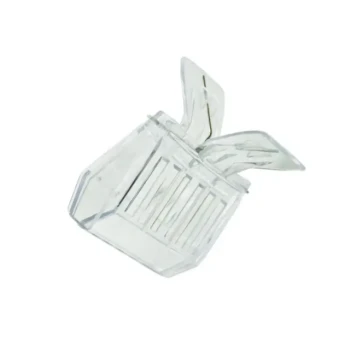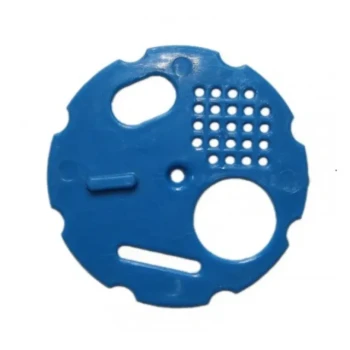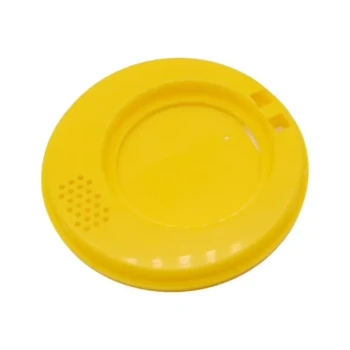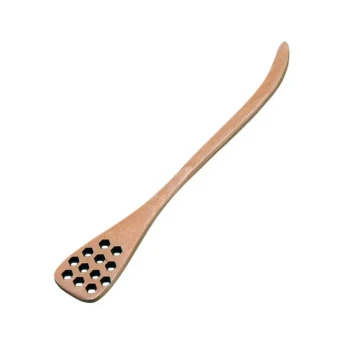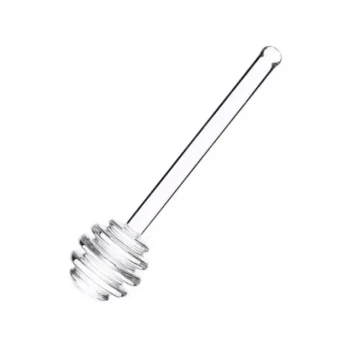The key practical application for beekeepers is that the mere presence of stored beebread around the brood does not guarantee a colony is well-nourished. This visual cue can be deceptive, as it reflects the quantity of stored pollen but reveals nothing about its nutritional quality or diversity.
Judging a colony's nutrition by the amount of beebread is like judging a person's health by the amount of food in their pantry. True nutritional health depends on the quality and variety of that food, not just its abundance.
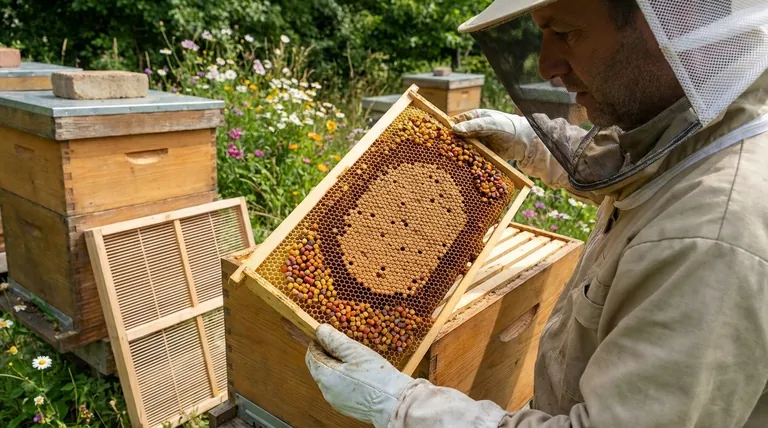
Why Beebread Presence Can Be Misleading
The most common mistake in hive inspection is equating visible stores with nutritional security. A deeper understanding of pollen is required to move beyond this simple—and often incorrect—assumption.
The Illusion of Abundance
A frame packed with beebread looks impressive and can give a false sense of security. However, if that pollen comes from a single, low-protein source, the colony can effectively starve while surrounded by food.
Not All Pollen Is Created Equal
Pollen is the bees' primary source of protein, lipids, vitamins, and minerals. The nutritional profile varies dramatically between plant species.
For example, pollen from pine trees is abundant but extremely low in the essential proteins required for brood development. A colony may fill its cells with pine pollen, but the nurse bees consuming it cannot produce enough royal jelly to feed larvae adequately.
The Critical Need for Diversity
A healthy bee diet requires a complete set of ten essential amino acids. No single pollen source provides all of them in the perfect ratio.
Therefore, colonies need access to a diverse range of floral sources throughout the season. A landscape dominated by a single crop (monoculture) can create a nutritional deficit even if that crop produces ample pollen. Different colors of pollen in the hive are a good sign of a diverse diet.
Shifting Colony Requirements
A colony's nutritional needs are not static. The demand for high-quality protein peaks during periods of intense brood rearing.
What was sufficient for a small, overwintered colony can become a critical shortage for a booming population in late spring. Failing to recognize this shift can lead to a sudden check in brood production and population decline.
Moving Beyond a Simple Visual Check
To truly assess a colony's nutritional status, you must look at a combination of factors that paint a more complete picture of health.
Assess Brood Health and Pattern
The brood nest is a direct indicator of nutritional intake. A well-nourished queen will lay in a solid, compact pattern with very few empty cells.
Conversely, a spotty or "shotgun" brood pattern, where larvae are missing or developing unevenly, is a classic sign of nutritional stress. In severe cases, bees may even resort to cannibalizing eggs and young larvae to recycle protein.
Observe Foraging Activity
Watch the entrance of the hive. Are the returning foragers carrying pollen? More importantly, are the pollen loads varied in color (yellow, orange, white, blue)?
A steady stream of multi-colored pollen loads indicates the bees are successfully finding and utilizing diverse forage. A lack of pollen or a dominance of a single color may signal a problem.
Know Your Local Forage
The most effective beekeepers are also amateur botanists. They know what is blooming in their area, when it blooms, and the nutritional value of its pollen.
This knowledge allows you to anticipate nutritional gaps, known as pollen dearths, and supplement before the colony shows signs of stress.
Understanding the Trade-offs of Intervention
While supplemental feeding can be a powerful tool, it must be used judiciously.
The Risk of Under-Supplementing
The primary danger is failing to act when needed. A sustained pollen dearth can cripple a colony, leading to a smaller workforce, increased susceptibility to pests and diseases (like Varroa and viruses), and poor honey production.
The Pitfall of Low-Quality Supplements
Not all pollen patties and supplements are created equal. Feeding a low-quality supplement may be ignored by the bees if better natural forage is available, or it may fail to provide the nutrition the colony truly needs, wasting time and money.
When Natural Forage is Superior
Bees will almost always prefer fresh, natural pollen over artificial supplements. Providing patties when the colony has access to abundant, diverse forage is unnecessary and can be an inefficient use of resources.
A Practical Framework for Nutritional Assessment
Your goal should be to use all available information to make an informed decision, rather than relying on a single visual cue.
- If your primary focus is a routine hive inspection: Look beyond the quantity of beebread and focus on the brood pattern's solidity and the diversity of pollen colors in the cells.
- If your primary focus is maximizing population for a honey flow: Ensure the colony has access to high-protein forage or supplements in the weeks leading up to the flow to build a massive, healthy workforce.
- If your primary focus is surviving a seasonal dearth: Proactively provide a high-quality pollen supplement as soon as you notice natural pollen sources drying up, even if the hive still has some beebread stores.
By shifting your focus from the quantity of stored food to the quality of the colony's diet, you can more accurately support its long-term health and productivity.
Summary Table:
| Visual Cue | What It Can Mislead You About | What to Assess Instead |
|---|---|---|
| Abundant Beebread | Colony is well-nourished | Brood pattern solidity & pollen color diversity |
| Single Color Pollen | Diverse diet is available | Forager activity & local bloom knowledge |
| Full Stores in Spring | Nutrition is sufficient for population boom | Timing of high-protein supplementation |
Ensure your colonies get the nutrition they need to thrive.
At HONESTBEE, we understand that the health of your apiary depends on more than just the quantity of food stores—it's about the quality and diversity of the diet. We supply commercial apiaries and beekeeping equipment distributors with high-quality supplements and feeding equipment designed to address nutritional gaps effectively.
Don't let a pollen dearth undermine your hive's productivity. Contact our experts today to discuss the right nutritional support for your operation and keep your colonies strong season after season.
Get a Personalized Nutrition Solution for Your Apiary
Visual Guide
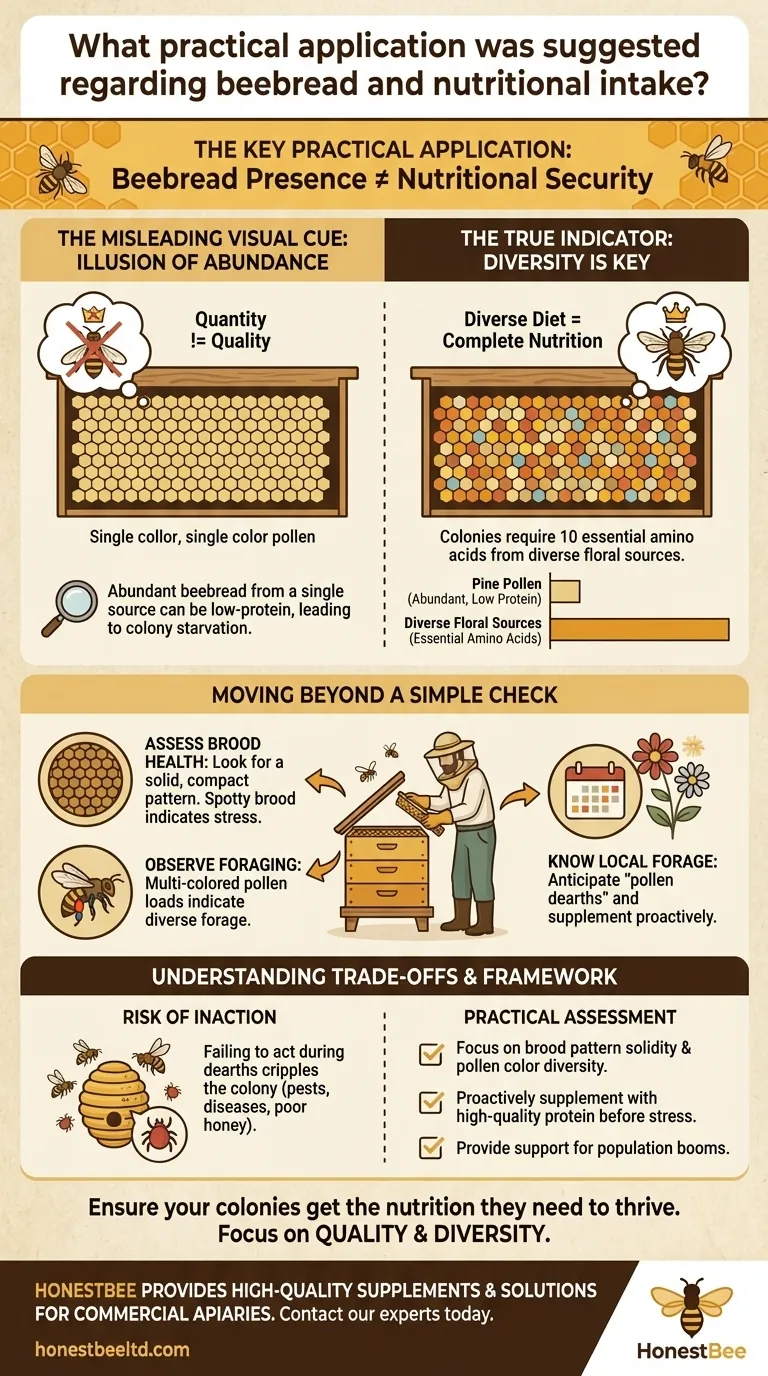
Related Products
- Wooden Queen Bee Excluder for Beekeeping
- Slatted Porter Style Bee Escape for Rapid Hive Clearing
- Professional Spring-Action Queen Catcher Clip
- Long Langstroth Style Horizontal Top Bar Hive for Wholesale
- HONESTBEE Professional Bee Frame Machine for Side Bar Shaping
People Also Ask
- How should a queen excluder be installed in a beehive? Ensure a Brood-Free Honey Harvest
- Should queen excluders be used in Flow hives? A Critical Guide for a Clean Harvest
- How does queen exclusion work in top-bar hives? A Guide to Natural Honey Barrier Management
- How does a queen excluder help in finding the queen bee? A Strategic Guide for Commercial Beekeepers
- Can a virgin queen bee get through a queen excluder? Uncover the Critical Swarm Risk

